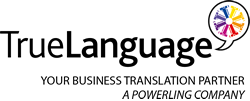
Culturally appropriate communication in other languages is key to an effective presence in non-English-speaking countries. When you properly localize your internal materials and correspondence, you facilitate global expansion by bridging cross-cultural differences among your diverse international workforce.
Although most of your foreign employees may be fluent in English, they’ll still naturally prefer to send and receive company communications in their native language. And they’ll understand important documents more easily in their own tongue. When you translate for your international workforce, you’ll boost morale and increase productivity.
Even when you hire a professional translation service on behalf of your international workforce, there is potentially still a role in the translation process for your bilingual employees. Who better to review the translations provided and help determine the best translations of your standard glossary terms? This process of post-translation client review can work best as part of a close collaboration with a trusted translation service provider.
You may be tempted to task your foreign employees with translating your organization’s materials from English into other languages. However, the time they spend translating is time taken away from other critical organizational duties. Also, being fluent in English and in a foreign language doesn’t automatically mean you are appropriately qualified to translate in those languages. Professional translation demands certified linguists, many of whom work for language service companies like TrueLanguage.
It’s best to be proactive in addressing cultural diversity. Before initiating human resource activity in non-English-speaking countries, READ MORE about 6 things to consider when readying your employees for communication beyond national borders.

